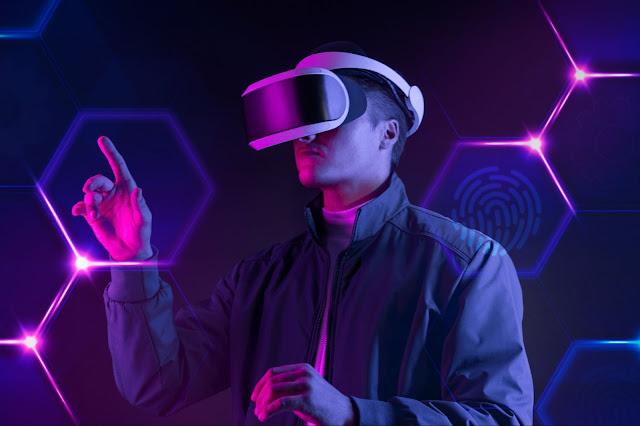Virtual Reality (VR) is a simulated environment created with the use of computer technology. It provides a three-dimensional, interactive experience that allows the user to immerse themselves in a digital world. VR has the potential to revolutionize a wide range of industries, including entertainment, education, and healthcare.
The History of Virtual Reality:
The concept of Virtual Reality can be traced back to the 1950s, when Morton Heilig, a cinematographer, invented the first VR headset, known as the Sensorama. However, it wasn't until the 1980s and 1990s that VR technology started to advance, with the introduction of computer graphics and improved display systems. Today, VR technology has advanced to the point where it is possible to create highly realistic, fully-immersive virtual environments.
How Virtual Reality Works:
Virtual Reality works by using computer technology to create a simulated environment. A VR headset, such as the Oculus Rift or HTC Vive, is worn by the user and tracks their movements. The headset also displays a 3D image that provides the illusion of being in a different place. In addition to the headset, VR often requires the use of hand-held controllers, allowing the user to interact with their virtual environment.
The Benefits of Virtual Reality:
Virtual Reality offers a number of benefits that make it an exciting and rapidly growing technology. One of the most significant benefits is its ability to immerse the user in a completely artificial environment. This allows for a level of escapism that was previously impossible. In addition, VR has the potential to revolutionize a number of industries, such as education and healthcare. In education, VR can be used to create interactive, engaging learning experiences. In healthcare, VR can be used to simulate medical procedures, allowing medical professionals to practice and improve their skills in a safe, controlled environment.
Virtual Reality Applications:
Virtual reality has a wide range of applications, and it has been used in various fields, including entertainment, education, training, and healthcare.
Entertainment:
Virtual reality has become increasingly popular in the entertainment industry, with VR games, movies, and other experiences being developed and enjoyed by millions of people worldwide. VR gaming allows users to experience a fully immersive gaming environment and interact with other players in real-time. VR movies and experiences offer a unique and captivating form of storytelling that can take viewers on a journey through different worlds and environments.
Education and Training:
VR technology has been used for education and training in a variety of fields. For example, VR can be used for simulations in medicine and surgery, allowing medical students and professionals to practice procedures in a safe and controlled environment. VR has also been used for military training and in the aviation industry for flight simulation training.
Healthcare:
Virtual reality has the potential to revolutionize healthcare, offering new and innovative ways to treat patients. For example, VR has been used in exposure therapy, a type of psychotherapy used to treat anxiety disorders, such as phobias. VR has also been used to help patients manage pain and reduce stress, as well as to provide physical therapy for patients with mobility issues.
The Future of Virtual Reality:
The future of Virtual Reality looks extremely promising. As technology continues to advance, it is likely that VR will become even more advanced and widely adopted. This will likely result in the creation of even more realistic and immersive virtual environments, as well as new and innovative applications for VR technology. It is an exciting time for the VR industry, and it will be interesting to see what new developments emerge in the coming years.
Conclusion:
Virtual Reality is a rapidly growing technology with the potential to revolutionize a wide range of industries. From entertainment to education to healthcare, VR offers a level of immersion and interactivity that was previously impossible. The future of VR looks bright, and it will be exciting to see what new developments emerge in the coming years.

Comments
Post a Comment